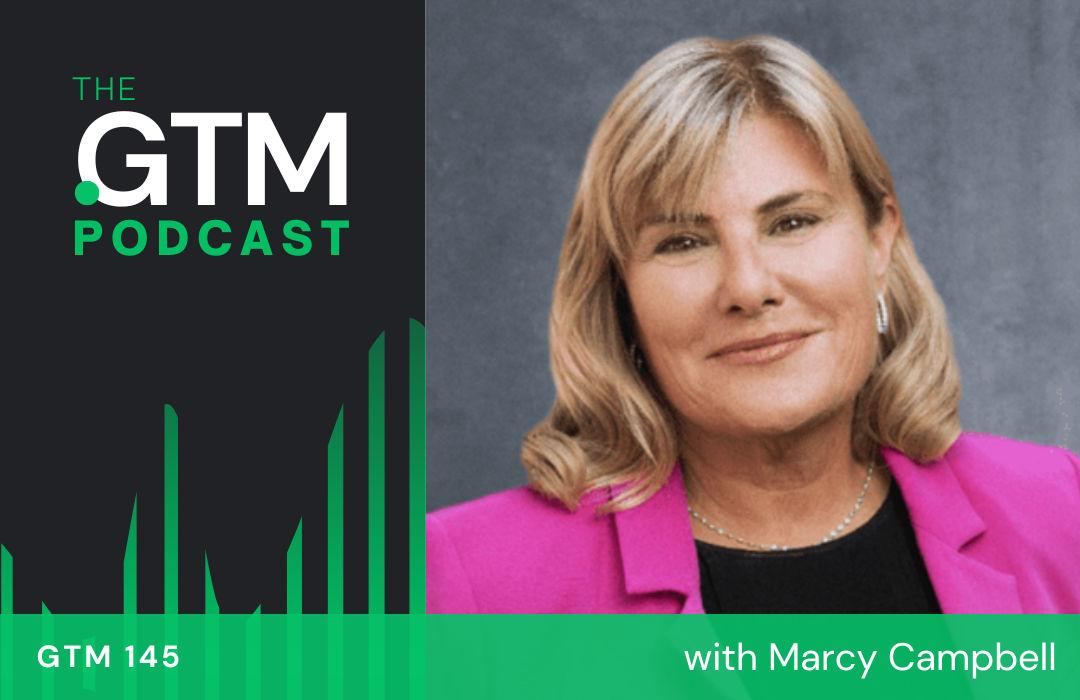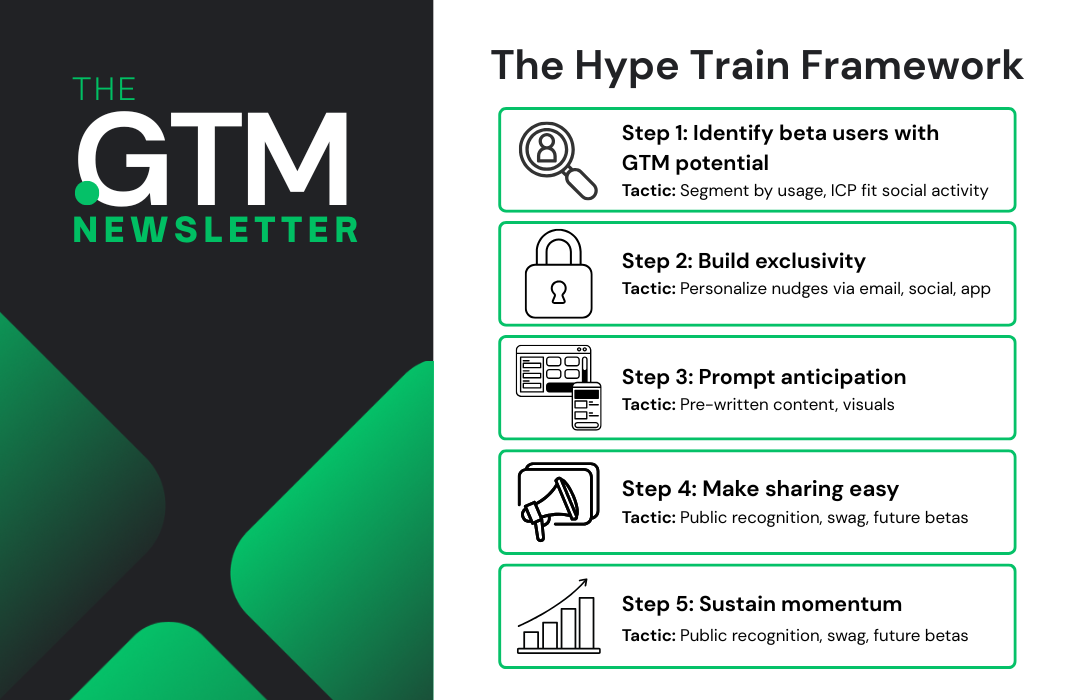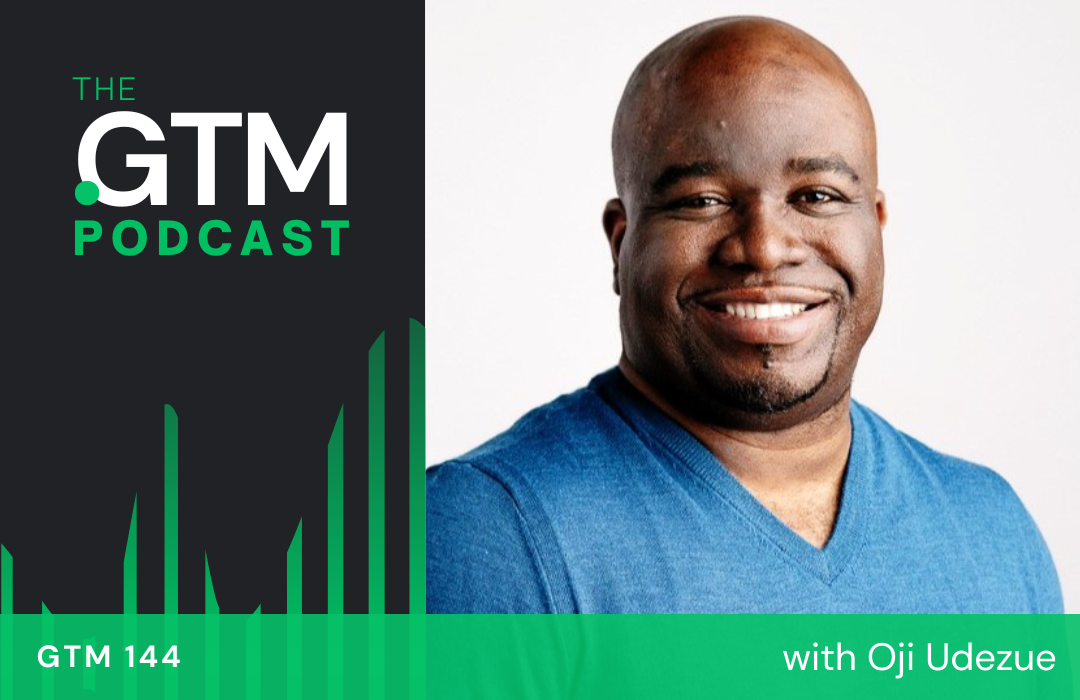This week on the Sales Hacker podcast, we speak with Pat O’Brien, the Chief Revenue Officer of Zylotech.
Pat heads up heading up sales, marketing, and business development. He spent many years building and scaling large and small teams and companies. He’s been through two successful exits with LinkedIn and Dun and Bradstreet.
Pat has also been on the early leadership teams of more than a half dozen successful internet advertising and marketing startups. He holds an MA in publishing and design management from the University of Baltimore
Today, we’ll hear about what happens when you take on a senior leadership position at a very early stage company, and how to think about growing and scaling that organization.
If you missed episode 88, check it out here: PODCST 88: How to Establish Strong Sales Motion with Pete Kazanjy.
What You’ll Learn
- Your org needs one set of data
- One place for data to live
- One team to own the data
- Oh, and KPIs for Early Stage Growth
Subscribe to the Sales Hacker Podcast
Show Agenda and Timestamps
- Show Introduction [00:00]
- About Pat O’Brien & Zylotech [3:45]
- Customer Data Platforms [6:27]
- Jumping into a Startup [8:22]
- Pat’s Career Journey [12:40]
- What, Exactly, Is Revenue Operations? [18:55]
- Rev Ops & CDP [23:02]
- KPIs for Early Stage Growth [31:50]
- Sam’s Corner [40:16]
Show Introduction
Sam Jacobs: Hey everybody, happy holidays! Welcome to The Sales Hacker podcast. This week on the show we’ve got Pat O’Brien, the Chief Revenue Officer of Zylotech. Pat is going to talk to us about what happens when you take on a senior leadership position at a very early stage company, and how you think about growing and scaling that organization.
Now before we get there, we want to thank our sponsors.The first one is a company that everybody’s heard about — DocuSign. Every sales org feels the pressure to close deals faster. Take control with the DocuSign agreement cloud, a suite of tools that automates sales contracts and quotes,all right in your CRM. Create custom contracts in a click, sign them digitally, and automatically pull data back into your opportunities. See why more than half a million businesses use DocuSign with a free trial and discount exclusively for Sales Hacker listeners at go.docusign.com/saleshacker.
Our second sponsor is Outreach, the leading sales engagement platform that enables sales reps to humanize their communications at scale, from automating the soul-sucking manual work that eats up selling time to providing action-oriented tips on what communications are working best. Outreach has your back.
Our second sponsor is Outreach, the leading sales engagement platform that enables sales reps to humanize their communications at scale, from automating the soul-sucking manual work that eats up selling time to providing action-oriented tips on what communications are working best. Outreach has your back.
Now, without further ado, let’s listen to this interview with Pat O’Brien.
About Pat O’Brien & Zylotech [3:45]
Sam Jacobs: We are excited today to have Pat O’Brien on the show. Pat’s the Chief Revenue Office for Zylotech, heading up sales, marketing, and business development. Pat spent many years building and scaling large and small teams and companies. He’s been through two successful exits with LinkedIn and Dun and Bradstreet. He’s also been on the early leadership teams of more than a half dozen successful internet advertising and marketing startups. He holds an MA in publishing and design management from the University of Baltimore. Pat, welcome to the show.
Customer Data Platforms [6:27]
Sam Jacobs: What is CDP? What is a customer data platform? Tell us what that means.
Pat O’Brien: Customer data platform is basically a platform that brings together very siloed data sources within a company. The idea of the CDP is to bring together information that might sit in sales, in marketing. So to bring in data from both sales or from all of sales, marketing, and customer experience to give that data a single ID so it could be recognized across the organization. In most cases, it gives the marketing and the sales group an opportunity or the chance to run various models and understand what the data is telling them and who’s likely to be their next best customer or the next best prospect — and then take action on that data. So send it out to LinkedIn if it’s a social media campaign or to their DSP of choice, say a trade desk if it’s a display ad, or into Marketo if it’s an email marketing campaign.
Jumping into a Startup [8:22]
Sam Jacobs: How did you end up as the CRO of Zylotech? How did you discover the company since they might not be on everybody’s radar?
Pat O’Brien: I got a text while I was down in Florida from my ex CEO at D&B, who at the time was a mentor of mine, Bob Carrigan, a fantastic individual. Bob said, “Hey, I’ve got this company. I might be investing in it. You should look into it.” So he gave me the founder’s name, and I came out here and spent probably no more than 30 minutes with Abhi Yadav the founder and was blown away by his intelligence and his humility, and also blown away by the product and the product team. What they were missing were pretty obvious components, things like a quality team, a marketing team, a quality PR firm. So as somebody who had been through a couple of these startups, I looked around and said, “Well, there’s a lot of things broken here. But nothing can’t be fixed. And if the product is rock solid, then that’s the most important thing.” So I’m in my seventh month here.
Pat’s Career Journey [12:40]
Sam Jacobs: How did you end up in sales? Walk us through a little bit of your career journey.
Pat O’Brien: My first job out of college was to work for a startup magazine for Ziff Davis in the high tech space. I needed to make money, so I went right into sales. And it was just something that I really enjoyed. It was not what I thought it would be. It was a lot of getting to know people, to use psychology to understand what makes people tick, and to really kind of get beyond what I thought the salesperson would be. And I enjoyed it and happen to be successful with it. Then I was fortunate to have a few successes recently, but have never gotten to the C Level. I quite honestly had never aspired to be a CRO and never aspired to own my own company. I didn’t want the whole thing. I knew what I could do. I knew I could do it better than anybody else. That’s what I wanted to focus on.
Sam Jacobs: How did you figure out that you didn’t want to be a CRO?
Pat O’Brien: I’m not a product guy, and I’m not an engineer by trade, so I have to have a really good partner on the product side. I also want somebody who I can constantly… a sounding board who I can constantly check my ideas with and likewise check their ideas. So I never wanted to go it alone, which is why I never really wanted to be a CEO. I don’t aspire to be a C Suite individual just for the sake of being a C Suite individual. We made money, and things are happy and life is good. So I just want to enjoy my career.
Sam Jacobs: What’s been the biggest surprise as you’ve rejoined the startup world seven months into the company?
Pat O’Brien:The challenge that I’ve had in here is “What is Zylotech? Who are you guys?” There’s a lot of that education up front to just get in the door. From there, then we can talk about the value that we add, the product that we have, the services that we offer, that kind of stuff. But cutting through the clutter and all the marketing hype and all the acronyms and everything is really difficult.
What, Exactly, Is Revenue Operations? [18:55]
Sam Jacobs: What is revenue operations from your perspective? Help us define the subject matter, and then tell us why you think it’s important.
Pat O’Brien: The whole idea of a CDP is to make sure that the teams that are running sales, management, onboarding, and customer success all are working off a common set of data. With a customer data platform, what we do is we try to normalize the data. We set KPIs across all the organization, sales, marketing and customer experience or customer success, common goals, common metrics, and it makes it easier for everybody to both attain and for management to judge if everybody’s in alignment with a single goal.
A quick example comes from one of our customers. When I first showed up to talk to him, he said, “Look, Pat. Don’t hit me with all the jargon about a CDP and what you guys do. Here’s my problem. I got three things. One, the data that my sales team is using is lousy. It’s really horrible, and it’s their own fault because they put in bad data. Second, when they boot up their computers on a Monday morning, they don’t know who to call because they have nothing that prioritizes. Is this a likely customer or not a likely customer? And then third, and lastly, even if the data was good and I knew who to contact, I don’t know how to do it. I don’t know how to reach out and get that data and those action items into a DSP, a DMP, into my Marketo or Eliquis system or what have you. If you could do those three things, if a CDP can make sure my data is clean, make sure I can prioritize opportunity and be attributable across any media that I want to promote my product in, then that will make sense to me.”
I thought, well, there you go. I don’t have to pitch or present. That’s exactly what we do in a nutshell.
Rev Ops & CDP [23:02]
Sam Jacobs: Are you equating revenue operations with the CDP? How do they relate to each other?
Pat O’Brien: I don’t get measured by sales. I get measured by revenue. And revenue operations is taking a look at not only the sale but the upsale or cross sale that might come from say the customer experience team. It’s from the opportunities that might come from the marketing team. It may come from the renewal that would come from the sales team or from new sales opportunities that would come from a partner sales channel. When we talk about revenue, we talk about it in a holistic fashion that says everything that touches a customer and everything that might lead to a dollar being attributable from a particular customer transaction, that’s what we call revenue. So not just sales, not just marketing, not just customer success. All three of those components and then the subsets underneath those components are all what drive the revenue for the company.
Sam Jacobs: Your point is revenue operations and customer data platforms are connected in the sense that revenue operations is a holistic view on how revenue is generated, and customer data platforms provide a holistic view of the customer, which is necessary to drive revenue across the organization aligning sales, marketing, customer success.
Pat O’Brien: Yes. And the KPIs and the success metrics aren’t separate for marketing, aren’t separate for sales, aren’t separate for customer experience. They’re all unified and they’re all accessible through the CDP.
Sam Jacobs: What’s the first thing that a Head of Revenue Operations should help an organization do to get their house in order so that they can drive revenue holistically?
Pat O’Brien: Step one is accurate data. If you think about it, what happens oftentimes is a campaign is about ready to be launched, an event or show is about ready to happen, and all of a sudden there’s a knee jerk reaction usually from marketing that says, “We need a new list. What we have isn’t good enough. We don’t trust our own data, so we want to go out to a third party.” They’re just taking data that is not accurate or not as accurate as they would like and add it to their existing data. So now they’ve got duplicates. They’ve got mixed records. They’ve got overlap, and they’ve incurred cost.
What we say to companies is first and foremost, make sure your data is accurate. In fact, what we did with our CDP was break it out into modules. We talk about the benefits of the entire platform. And a lot of companies will say, “That’s where I want to get to, but I’m not ready for it yet.” We say, “Okay. Well, we can help you today. We can help you on the data enrichment and data enhancement aspect of it.” Generally what that does is it builds trust between us and the client. Then that leads to larger engagement down the road, not only with our platform, but then cross engagements throughout the organization in various sales units or various geographic locations.
KPIs for Early Stage Growth [31:50]
Sam Jacobs: What is CDP? What is a customer data platform? Tell us what that means.
Pat O’Brien: When I walked into this, there were already numbers established, and that made it difficult because there was so much that we didn’t know. Going into next year, it’ll be different. I use a series of leading indicators and lagging indicators. I can sit there and measure did we hit the number this month, are we going to hit it this quarter, and so forth. If I can start taking a look at leading indicators, such as how many calls were made, weekly pipeline growth, new accounts, attitude, the pipeline both from an account level and from a dollar level, I can start to measure activity. If I can see activity going in the right direction by a rep, I know ultimately we’re going to get to where we’re going. I’m really looking forward to 2020 as a year where we blow out our numbers, but then also start to refine our strategy in terms of setting realistic goals and targets and appropriately and really understanding from a client’s standpoint.
Sam’s Corner [40:16]
Sam Jacobs: Hey, folks. Sam’s corner. For me there’s one important insight that I got out of that interview: you cannot drive alignment across your organization when you have different data. Whether you use Pat’s solution or any other solution, there’s a reason that there’s been this massive kind of explosion of business intelligence tools all around creating some kind of data lake. The main important thing is that we are reporting the same data consistently over time.
And, hopefully, just one team controls it. We’re going to have one set of data. We’re going to have one place where data is generated. We’re going to have one team that extracts the data.
What We Learned
- Your org needs one set of data
- One place for data to live
- One team to own the data
- Oh, and KPIs for Early Stage Growth
Don’t miss episode 90!
I hope you enjoyed the show. Before we go, let’s thank our sponsors.The first is DocuSign. Execute contracts and get to revenue faster with DocuSign, used by employees in 90% of the Fortune 500 businesses. Learn more at go.docusign.com/saleshacker. Our second sponsor is Outreach, the leading sales engagement platform
If you want to reach out to me with feedback, you can reach me on LinkedIn. If you haven’t rated the show, please give us five stars on the iTunes rating system so that we can remain in business and continue to bring you this show.
As always, thanks so much for listening, I’ll talk to you next time.







